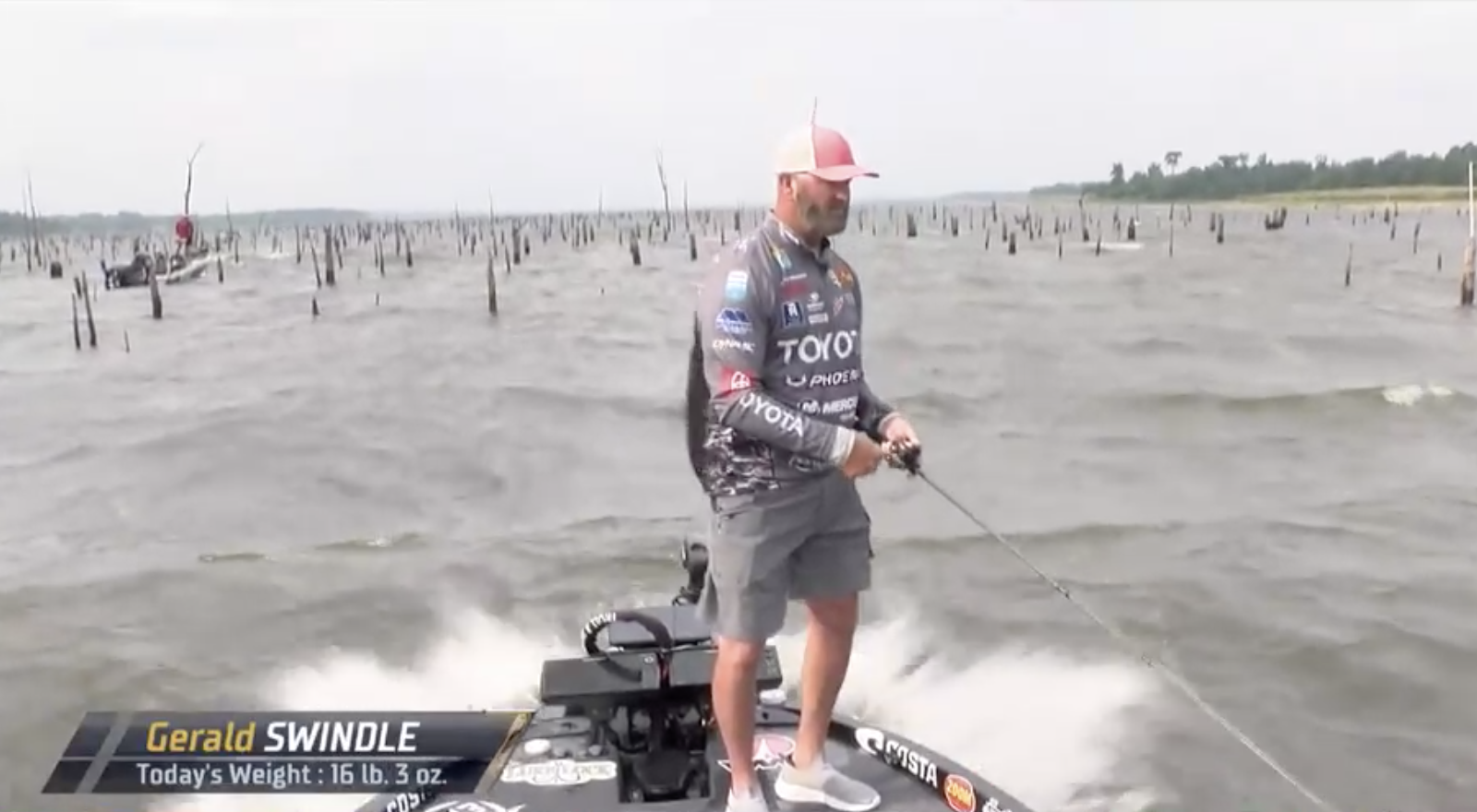
Wind is your friend — just not always your best friend. That’s the hard truth confronting anglers, as Lake Fork grows increasingly turbulent under the relentless assault of a strong south wind.
Anglers know that wind has an undeniably stimulating influence, but as the saying goes: Too much of a good thing can be…ya know.
Limiting Impact
B.A.S.S. won’t let a tournament field launch if the day’s conditions are deemed unsafe, so it’s more of an efficiency and time-management vexation. For one thing windy conditions shrink the effective playing field by eliminating a lot of exposed areas that become too rough to fish.
GPS-equipped trolling motors can hold a boat in general position, but when the rising and falling feels more like a roller coaster ride, precision casting and fish fighting suffer. This proves particularly challenging amid Lake Fork’s abundant timber where success requires threading the right cast and then extracting a fish from the woody fortress.
This scenario makes any lake “fish small,” but it’s a double-whammy on Fork, as the dramatically lower water level had already shrunk the lake by a lot. Back in the fall, the Sabine River Authority of Texas started drawing down Lake Fork to allow for dam repairs.
The level currently stands about 5 1/2 feet below normal pool of 403. With broad stretches of sandy beach encompassing the lake, the semi-protected areas where anglers can efficiently fish have been reduced.
Greg Hackney, who placed fourth on Day 1, caught a fish far into a protected area and made a telling comment to his marshal: “I’ll probably do a lot of creek fishing today because I can fish these places.”
Rough Rides
And then, there’s the comfort factor — more accurately the discomfort factor. Tooth-jarring rides are just something anglers often have to endure, but wave pounding also takes its toll on the equipment.
During the Day-1 weigh ins, third-place Gerald Swindle grinned through what was clearly a painful memory.
“This place right here will bring out an insurance claim,” Swindle said of his day’s rough ride. “If I do a fishing report and they say ‘What do you need on Fork?’ I’m gonna say ‘Insurance — really good insurance.’”
Navigation also rises into critical consideration, as Fork’s lower water has brought normally inconsequential obstructions into significant consequence. Miss the boat lane by even a little bit and you’ll have a close encounter of the damaging kind.
“You try to follow those boat lanes in (5-foot waves) and I was like Swervin’ Irvin, I looked like Dale (Earnhardt) Jr. drunk at Talladega,” Swindle said. “I was like ‘Oh, there went a stump, there went a stump. Where’d that line go?’ It was tough out there.”
How They’re Doing
As of 10:45, Swindle’s currently at 27 pounds and sits in second. (Weights unofficial until weigh ins.) He’s been fishing an exposed area where foamy wind streaks slice through the timber. With each catch, he and his marshal struggled to keep the fish from swinging in the wind.
Swindle called himself “The Wind Blocker,” as he used his body to shield his marshal during the weighing process. They ultimately used the boat’s console to break the blow, but they and many others will deal with this time-consuming challenge the rest of the day.
Day-1 leader Cliff Prince has tucked back into the creek that produced his 32-pound, 5-ounce mega-bag. His protected area has yielded 18-6 for a fourth-place position, but he needs to step on the gas.
Elsewhere, last year’s Lake Fork champ Lee Livesay is on track to another huge bag like the 32 pounds he weighed on Day 1. He’s selectively working semi-protected areas where big schools of Lake Fork dandies roam.
Livesay’s limit of 28-10 has him in the lead. A 7 1/2-pounder gave him the boost he needed. Brandon Palaniuk, eighth on Day 1, has improved to third with the day’s biggest bag — 28-11.
Bryan New, 17th on Day 1, has made a big move up to fourth with a 27-pound limit that includes two in the 7-pound class.
Deal With It
We won’t see the wind subsiding anytime today, so we will likely see a lot more running around, as anglers try to find a suitable — and unoccupied — spot. To that point, once an angler finds a place he can fish, he’ll be more likely to stay put longer.
That’s a tough proposition when you’re mentally calculating the potential of a dozen other places. On the flipside, the lake’s Florida-strain bass are notorious for pulling up to feed at certain times of the day.
So, we may here tales of anglers who had to park on a spot longer than they liked, but found their patience rewarded by a flurry of big bites.
Wind can still be your friend.





